You’ll need to conduct thorough validation testing to guarantee your medical device prototype meets regulatory standards and performs reliably in clinical settings. This includes clinical performance testing against established benchmarks, usability studies with diverse user groups, simulated real-world environment testing, biocompatibility assessments following ISO 10993 standards, and regulatory compliance verification under FDA requirements. Each testing method captures different aspects of device functionality, safety, and user interaction. The thorough approach below will guide you through each essential validation step.
Clinical Performance Testing for Medical Device Prototypes
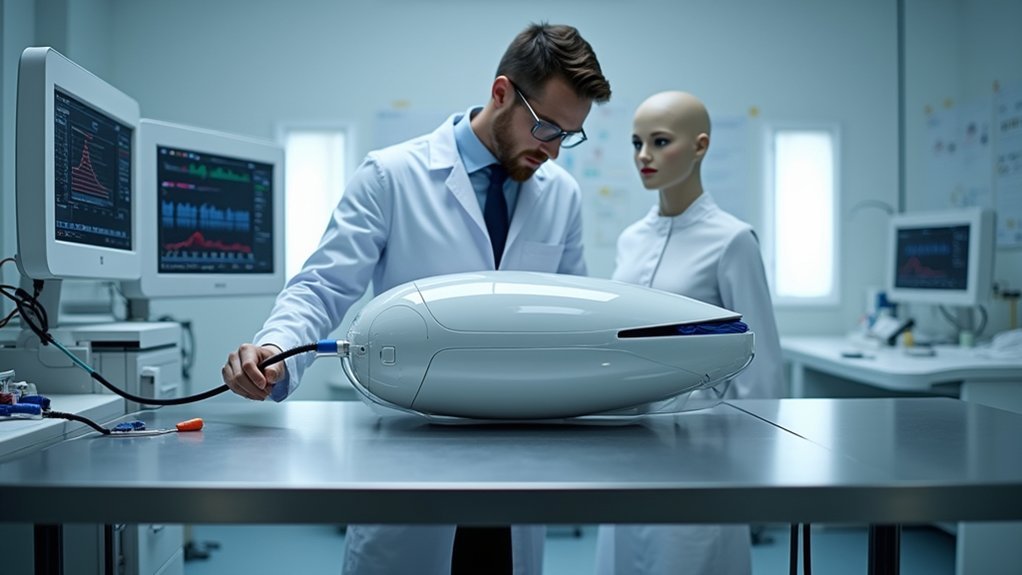
When developing a medical device prototype, you’ll need to conduct clinical performance testing to verify that your device functions effectively in real-world healthcare environments.
This prototype testing compares your device’s performance against established benchmarks, validating accuracy and reliability across diverse patient populations.
Your testing protocols should include detailed usability studies and simulated use scenarios to identify potential design flaws.
User feedback becomes essential during this phase, helping you refine the device’s design before market launch.
User feedback drives critical design refinements during prototype testing, ensuring your medical device meets real-world healthcare needs before launch.
You’ll gather data through clinical trials that demonstrate your prototype’s effectiveness across various healthcare settings.
Regulatory bodies like the FDA require extensive documentation showing compliance with safety standards.
Without thorough clinical performance testing of medical device prototypes, you won’t achieve regulatory approval for commercialization.
Usability and Human Factors Validation Methods
Since user interaction directly impacts medical device safety and effectiveness, you’ll need to implement thorough usability and human factors validation methods during prototype development.
These usability validation methods assess how efficiently users operate your device while identifying potential user errors that could compromise safety standards.
Your design process should incorporate iterative testing to capture user needs early and continuously refine the interface.
Human factors validation evaluates your device’s design to mitigate risks and enhance overall usability.
Essential usability testing approaches include:
- Formative usability testing for iterative feedback during development
- Summative testing to assess final product performance
- Diverse user groups testing to guarantee broad accessibility
- Structured user trials following FDA guidelines
- Error identification and mitigation assessments
This extensive approach to medical device development markedly reduces user errors and improves safety outcomes.
Simulated Real-World Environment Testing
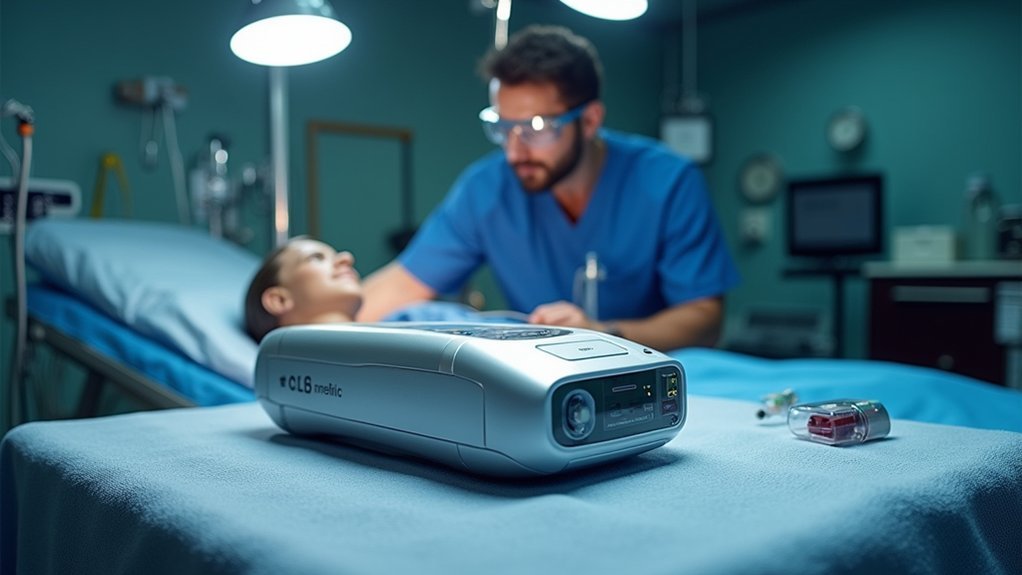
While laboratory testing provides controlled validation data, simulated real-world environment testing bridges the gap between controlled studies and actual clinical deployment by replicating the complex conditions your medical device will encounter in practice.
This testing verifies your device functions as intended across varying environmental conditions and user behaviors that reflect actual user needs and intended use.
You’ll identify potential issues through observing real user interactions in simulated use scenarios. This validation process enables design controls refinement while gathering evidence for regulatory requirements.
The FDA often requires this testing data to demonstrate compliance with safety standards. By incorporating user feedback during simulated testing, you’ll improve device reliability and user satisfaction before market launch.
Biocompatibility and Safety Assessment Protocols
Although simulated testing validates device performance, biocompatibility and safety assessment protocols evaluate how your medical device interacts with living tissue to prevent adverse biological reactions.
You’ll need thorough testing following ISO 10993 standards to achieve regulatory approval.
Your biocompatibility testing strategy should include:
- Cytotoxicity assessment using in vitro testing with cell cultures to evaluate cellular damage
- Materials evaluation considering device composition, contact duration, and tissue types involved
- In vivo testing with animal models to assess biological responses and systemic effects
- Sensitization and irritation studies to identify potential allergic reactions or inflammatory responses
- Documentation protocols meeting FDA and ISO requirements for regulatory submission
You’ll conduct both acute and chronic toxicity assessments based on your device’s intended use.
Proper safety assessment guarantees patient protection while meeting stringent regulatory standards for market approval.
Regulatory Compliance Verification Testing
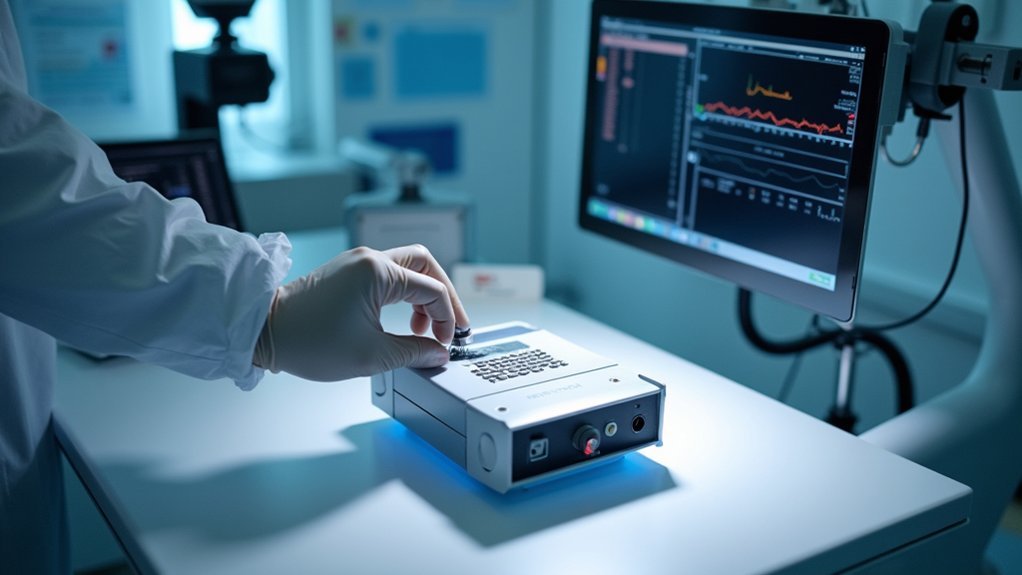
Following successful biocompatibility evaluation, regulatory compliance verification testing validates that your medical device meets all mandatory standards established by governing bodies like the FDA, ISO 13485, and EU MDR.
You’ll need to provide documented evidence under FDA 21 CFR Part 820 that demonstrates your device fulfills specified design inputs and user needs through systematic verification testing.
Your compliance strategy must incorporate ISO 14971’s thorough risk management process, identifying potential hazards and evaluating their safety impact during testing phases.
Regulatory submissions require detailed documentation of your verification testing methods and results, proving your medical device operates within defined parameters.
Non-compliance can result in market approval delays, product recalls, and legal liabilities, making adherence absolutely critical.
Frequently Asked Questions
What Is Test Method Validation for Medical Devices?
You’ll verify that your testing methods produce reliable, consistent data for medical devices. It’s required by FDA regulations and helps you identify measurement errors, ensuring your devices meet safety standards and compliance requirements.
What Are the Validation Methods of Testing?
You’ll use several validation testing methods: physical testing for material durability, usability testing for user interaction, performance testing against specifications, clinical evaluations with patients, and regulatory compliance validation for standards.
How to Validate a Prototype?
You’ll conduct structured functional and usability testing using real-world scenarios, document all procedures and results, gather user feedback, iterate based on findings, and guarantee compliance with relevant regulatory standards throughout the validation process.
What Are the Four Types of Prototypes That Engineers Can Use to Test and Validate Their Designs?
You’ll use four prototype types to test designs: Proof of Concept prototypes validate feasibility, Alpha prototypes enable internal testing, Beta prototypes incorporate user feedback, and Pilot prototypes prepare for commercialization through real-world evaluation.

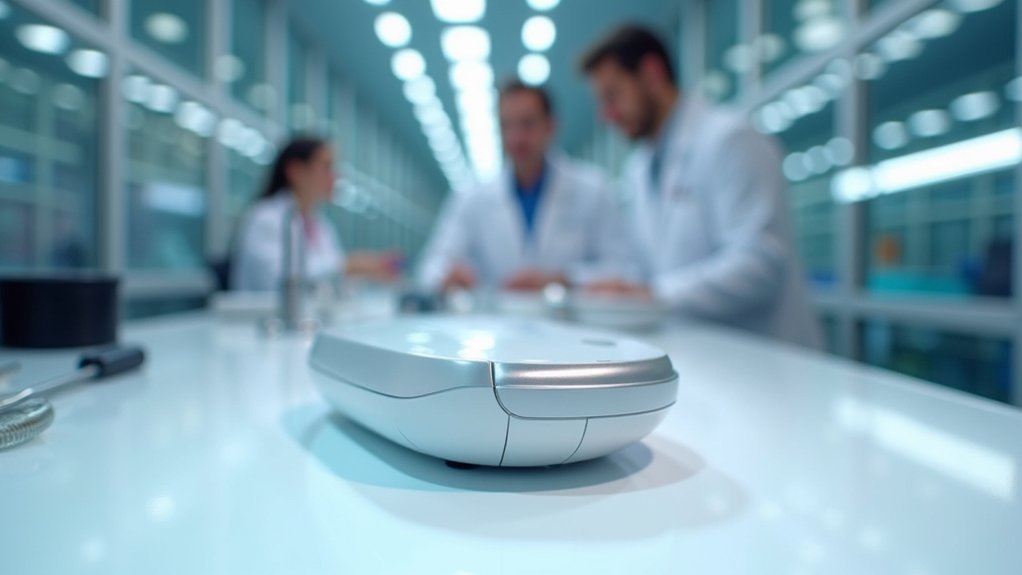
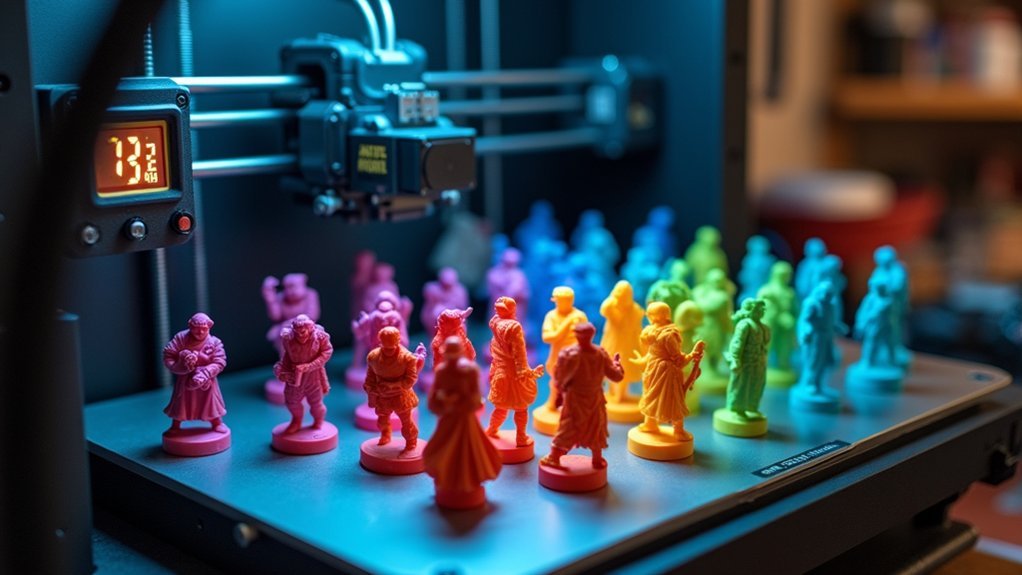


Leave a Reply